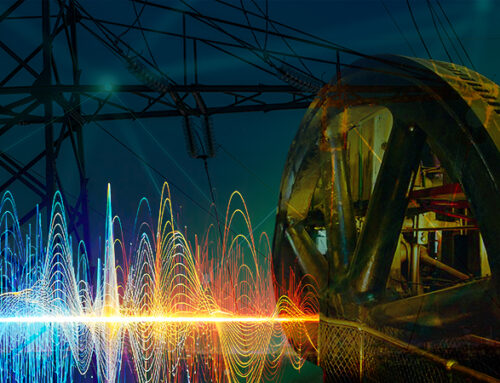Transmission charging is far from simple even in the traditional model of electricity networks, as illustrated by the diagram below. In principle, the costs of bringing electricity from large units of generation to consumers is socialised across users via three main tariffs: Transmission Use of System Charges (“TNUoS”), Balancing Services Use of System Charges (“BSUoS”) and Distribution Use of System Charges (“DUoS”).
TNUoS charges represent about 4% of electricity bills are expected to cost £2.7 billion in 2016/17 rising to £3.8 billion by 2020/21. BSUoS charges are about £1 billion, and DUoS charges at £6 billion represent 16% of bills. For consumers, each charge is based on usage, but with different calculation methods, with TNUoS and DUoS being based on usage in given periods (the three highest half-hours in the winter evening peaks, known as “Triads” for TNUoS, and various colour-coded time bands across each day for DUoS), and BSUoS being a set consumption-based charge for each half-hourly period. TNUoS and DUoS rates have significant regional variations….TNUoS can vary from £15-£40 per kilowatt.
Although complex, the system was designed to minimise overall network costs. Historically, costs of the transmission network were driven by the need to design a grid that would meet peak electricity needs, so basing the recovery of these costs on the periods of highest electricity use in the year makes sense as the grid must always meet the maximum need not the average need. A central part of this was the recovery of costs based on net demand.
Similarly, the distribution networks are engineered to meet peak demand, but most consumers on the distribution network are not billed on a half-hourly basis, so different charging structures are needed. Large industrial consumers have long been incentivised to shift demand away from peak times through the time-banded tariffs where charges are significantly higher in the “Red Bands” during peak periods.
In a similar way, many large industrial users practice “triad-avoidance” strategies, where a service provider issues triad alerts enabling them to try to shift demand away from potential triad periods. In winter 2015-16, National Grid saw up to 2 GW of demand reduction as a result of triad avoidance during each triad period. In fact, so many consumers are actively trying to reduce usage during potential triad periods that demand may fall to a degree that the period no longer qualifies as a triad. This is making prediction of triads more difficult and will make the process of triad avoidance harder.

Time to re-visit how the grid is paid for
The electricity system is undergoing radical change. Renewable generation is often located in remote areas and is intermittent, creating stability management challenges for the system operator, and small-scale generation is increasingly connected to the local distribution networks thereby avoiding the transmission system altogether.
The growth of storage, particularly the prospect of behind-the-meter storage further complicates the picture as the logical extension of this practice would lead to some consumers being removed from the grid altogether, as suggested by research in Australia. Care must be taken to ensure that the “option value” of grid connection, where consumers use the grid purely as a back-up, are properly catered for.
These changes re-open the issue of how transmission costs can be equitably recovered from consumers, and have prompted both Ofgem and National Grid to review the current charging framework. As policy-related energy costs are growing (as I have detailed in recent posts), increasing network costs arising from the energy transition are another significant element of electricity bills, so any changes have the potential to be disruptive.
Ofgem has been exploring changes in two areas:
- whether the ability of embedded generators to avoid TNUoS charges represents and excessive benefit, particularly as this leaves the costs to be recovered from fewer customers, and is one of the factors that enables embedded generators to compete successfully in the Capacity Market at the expense of large gas generators. Ofgem is considering moving to a system of transmission cost recovery based on gross rather than net demand.
- whether the method of recovering distribution network costs is properly cost reflective, or whether the costs assigned to peak periods are too high – Ofgem has decided that the current structure is not adequate and from 2018, the difference between the tariffs will be smoothed with charges being removed from the peak periods and re-allocated to the off-peak periods.
National Grid is also reviewing network charging, and has identified a number of primary and secondary themes around the desired outcomes of any change:

Ofgem is due to report soon on its consultation relating to embedded benefits. The non-confidential responses it received can be found here, with many respondents arguing that Ofgem’s approach is too narrow and risks creating further distortions in the system. There are differences in opinion as to whether the existence of embedded generation does or does not reduce the need for transmission infrastructure and therefore whether the current method of recovery based on net demand is appropriate.
It is understandable that Ofgem would like to support the Government’s aims of incentivising more large CCGTs by reducing competition from embedded generation, and it is difficult to argue that embedded generators have not received benefits from the current frameworks (including size-based exceptions from emissions regulations, and tax benefits via the Enterprise Investment Scheme and the Venture Capital Trust Scheme). However in seeking to solve this one rather narrow problem, Ofgem does indeed risk creating unintended consequences.
What is clear is that transmission and balancing costs are growing and that the current methods of cost recovery were designed for a market structure that is no longer relevant. A wider review of the cost recovery mechanisms for delivering electricity needs to be developed that take into account the changing nature of the system, the emergence of storage, embedded and behind the meter generation, active turn-up/down DSR, and the changing role of DNOs.







Leave A Comment